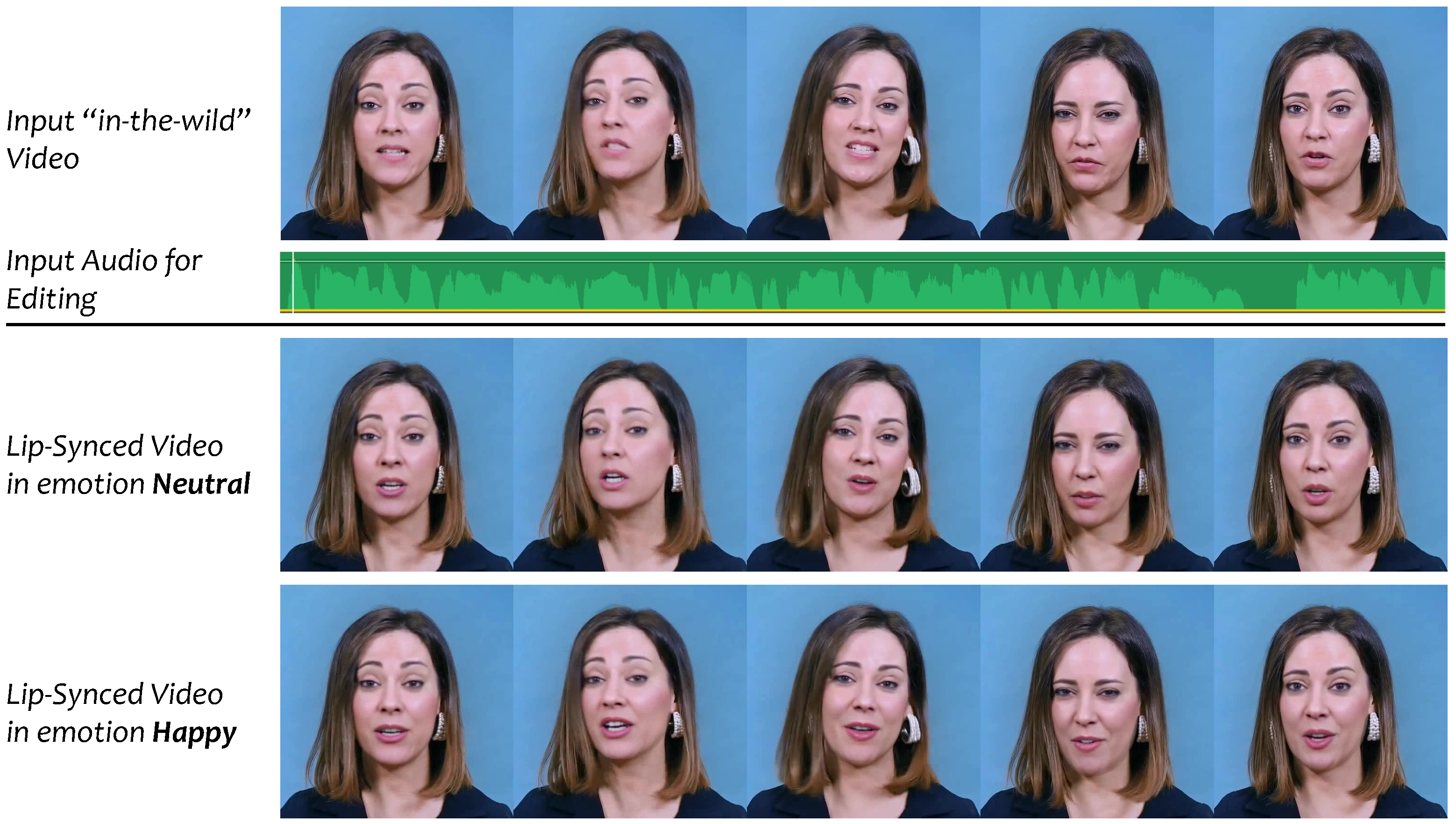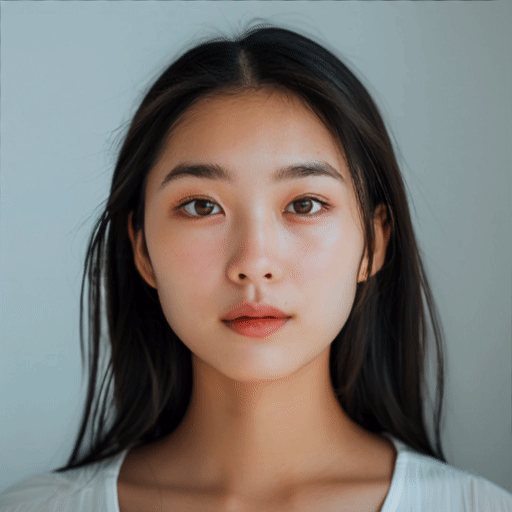livespeechportraits
Maintainer: yuanxunlu

9

| Property | Value |
|---|---|
| Run this model | Run on Replicate |
| API spec | View on Replicate |
| Github link | View on Github |
| Paper link | View on Arxiv |
Create account to get full access
Model overview
The livespeechportraits model is a real-time photorealistic talking-head animation system that generates personalized face animations driven by audio input. This model builds on similar projects like VideoReTalking, AniPortrait, and SadTalker, which also aim to create realistic talking head animations from audio. However, the livespeechportraits model claims to be the first live system that can generate personalized photorealistic talking-head animations in real-time, driven only by audio signals.
Model inputs and outputs
The livespeechportraits model takes two key inputs: a talking head character and an audio file to drive the animation. The talking head character is selected from a set of pre-trained models, while the audio file provides the speech input that will animate the character.
Inputs
- Talking Head: The specific character to animate, selected from a set of pre-trained models
- Driving Audio: An audio file that will drive the animation of the talking head character
Outputs
- Photorealistic Talking Head Animation: The model outputs a real-time, photorealistic animation of the selected talking head character, with the facial movements and expressions synchronized to the provided audio input.
Capabilities
The livespeechportraits model is capable of generating high-fidelity, personalized facial animations in real-time. This includes modeling realistic details like wrinkles and teeth movement. The model also allows for explicit control over the head pose and upper body motions of the animated character.
What can I use it for?
The livespeechportraits model could be used to create photorealistic talking head animations for a variety of applications, such as virtual assistants, video conferencing, and multimedia content creation. By allowing characters to be driven by audio, it provides a flexible and efficient way to animate digital avatars and characters. Companies looking to create more immersive virtual experiences or personalized content could potentially leverage this technology.
Things to try
One interesting aspect of the livespeechportraits model is its ability to animate different characters with the same audio input, resulting in distinct speaking styles and expressions. Experimenting with different talking head models and observing how they react to the same audio could provide insights into the model's personalization capabilities.
This summary was produced with help from an AI and may contain inaccuracies - check out the links to read the original source documents!
Related Models

video-retalking

5.7K
The video-retalking model is a powerful AI system developed by Tencent AI Lab researchers that can edit the faces of real-world talking head videos to match an input audio track, producing a high-quality and lip-synced output video. This model builds upon previous work in StyleHEAT, CodeTalker, SadTalker, and other related models. The key innovation of video-retalking is its ability to disentangle the task of audio-driven lip synchronization into three sequential steps: (1) face video generation with a canonical expression, (2) audio-driven lip-sync, and (3) face enhancement for improving photo-realism. This modular approach allows the model to handle a wide range of talking head videos "in the wild" without the need for manual alignment or other user intervention. Model inputs and outputs Inputs Face**: An input video file of someone talking Input Audio**: An audio file that will be used to drive the lip-sync Audio Duration**: The maximum duration in seconds of the input audio to use Outputs Output**: A video file with the input face modified to match the input audio, including lip-sync and face enhancement. Capabilities The video-retalking model can seamlessly edit the faces in real-world talking head videos to match new input audio, while preserving the identity and overall appearance of the original subject. This allows for a wide range of applications, from dubbing foreign-language content to animating avatars or CGI characters. Unlike previous models that require careful preprocessing and alignment of the input data, video-retalking can handle a variety of video and audio sources with minimal manual effort. The model's modular design and attention to photo-realism also make it a powerful tool for advanced video editing and post-production tasks. What can I use it for? The video-retalking model opens up new possibilities for creative video editing and content production. Some potential use cases include: Dubbing foreign language films or TV shows Animating CGI characters or virtual avatars with realistic lip-sync Enhancing existing footage with more expressive or engaging facial performances Generating custom video content for advertising, social media, or entertainment As an open-source model from Tencent AI Lab, video-retalking can be integrated into a wide range of video editing and content creation workflows. Creators and developers can leverage its capabilities to produce high-quality, lip-synced video outputs that captivate audiences and push the boundaries of what's possible with AI-powered media. Things to try One interesting aspect of the video-retalking model is its ability to not only synchronize the lips to new audio, but also modify the overall facial expression and emotion. By leveraging additional control parameters, users can experiment with adjusting the upper face expression or using pre-defined templates to alter the character's mood or demeanor. Another intriguing area to explore is the model's robustness to different types of input video and audio. While the readme mentions it can handle "talking head videos in the wild," it would be valuable to test the limits of its performance on more challenging footage, such as low-quality, occluded, or highly expressive source material. Overall, the video-retalking model represents an exciting advancement in AI-powered video editing and synthesis. Its modular design and focus on photo-realism open up new creative possibilities for content creators and developers alike.
Updated Invalid Date

live-portrait

5
The live-portrait model is a unique AI tool that can create dynamic, audio-driven portrait animations. It combines an input image and video to produce a captivating animated portrait that reacts to the accompanying audio. This model builds upon similar portrait animation models like live-portrait-fofr, livespeechportraits-yuanxunlu, and aniportrait-audio2vid-cjwbw, each with its own distinct capabilities. Model inputs and outputs The live-portrait model takes two inputs: an image and a video. The image serves as the base for the animated portrait, while the video provides the audio that drives the facial movements and expressions. The output is an array of image URIs representing the animated portrait sequence. Inputs Image**: An input image that forms the base of the animated portrait Video**: An input video that provides the audio to drive the facial animations Outputs An array of image URIs representing the animated portrait sequence Capabilities The live-portrait model can create compelling, real-time animations that seamlessly blend a static portrait with dynamic facial expressions and movements. This can be particularly useful for creating lively, engaging content for video, presentations, or other multimedia applications. What can I use it for? The live-portrait model could be used to bring portraits to life, adding a new level of dynamism and engagement to a variety of projects. For example, you could use it to create animated avatars for virtual events, generate personalized video messages, or add animated elements to presentations and videos. The model's ability to sync facial movements to audio also makes it a valuable tool for creating more expressive and lifelike digital characters. Things to try One interesting aspect of the live-portrait model is its potential to capture the nuances of human expression and movement. By experimenting with different input images and audio sources, you can explore how the model responds to various emotional tones, speech patterns, and physical gestures. This could lead to the creation of unique and captivating animated portraits that convey a wide range of human experiences.
Updated Invalid Date

video-retalking

71
The video-retalking model, created by maintainer chenxwh, is an AI system that can edit the faces of a real-world talking head video according to input audio, producing a high-quality and lip-synced output video even with a different emotion. This model builds upon previous work like VideoReTalking, Wav2Lip, and GANimation, disentangling the task into three sequential steps: face video generation with a canonical expression, audio-driven lip-sync, and face enhancement for improving photorealism. Model inputs and outputs The video-retalking model takes two inputs: a talking-head video file and an audio file. It then outputs a new video file where the face in the original video is lip-synced to the input audio. Inputs Face**: Input video file of a talking-head Input Audio**: Input audio file to drive the lip-sync Outputs Output Video**: New video file with the face lip-synced to the input audio Capabilities The video-retalking model is capable of editing the faces in a video to match input audio, even if the original video and audio do not align. It can generate new facial animations with different expressions and emotions compared to the original video. The model is designed to work on "in the wild" videos without requiring manual alignment or preprocessing. What can I use it for? The video-retalking model can be used for a variety of video editing and content creation tasks. For example, you could use it to dub foreign language videos into your native language, or to animate a character's face to match pre-recorded dialogue. It could also be used to create custom talking-head videos for presentations, tutorials, or other multimedia content. Companies could leverage this technology to easily create personalized marketing or training videos. Things to try One interesting aspect of the video-retalking model is its ability to modify the expression of the face in the original video. By providing different expression templates, you can experiment with creating talking-head videos that convey different emotional states, like surprise or anger, even if the original video had a neutral expression. This could enable new creative possibilities for video storytelling and content personalization.
Updated Invalid Date

aniportrait-audio2vid

5
The aniportrait-audio2vid model is a novel framework developed by Huawei Wei, Zejun Yang, and Zhisheng Wang from Tencent Games Zhiji, Tencent. It is designed for generating high-quality, photorealistic portrait animations driven by audio input and a reference portrait image. This model is part of the broader AniPortrait project, which also includes related models such as aniportrait-vid2vid, video-retalking, sadtalker, and livespeechportraits. These models all focus on different aspects of audio-driven facial animation and portrait synthesis. Model inputs and outputs The aniportrait-audio2vid model takes in an audio file and a reference portrait image as inputs, and generates a photorealistic portrait animation synchronized with the audio. The model can also take in a video as input to achieve face reenactment. Inputs Audio**: An audio file that will be used to drive the animation. Image**: A reference portrait image that will be used as the basis for the animation. Video (optional)**: A video that can be used to drive the face reenactment. Outputs Animated portrait video**: The model outputs a photorealistic portrait animation that is synchronized with the input audio. Capabilities The aniportrait-audio2vid model is capable of generating high-quality, photorealistic portrait animations driven by audio input and a reference portrait image. It can also be used for face reenactment, where the model can animate a portrait based on a reference video. The model leverages advanced techniques in areas such as audio-to-pose, face synthesis, and motion transfer to achieve these capabilities. What can I use it for? The aniportrait-audio2vid model can be used in a variety of applications, such as: Virtual avatars and digital assistants**: The model can be used to create lifelike, animated avatars that can interact with users through speech. Animation and filmmaking**: The model can be used to create photorealistic portrait animations for use in films, TV shows, and other media. Advertising and marketing**: The model can be used to create personalized, interactive content that engages viewers through audio-driven portrait animations. Things to try With the aniportrait-audio2vid model, you can experiment with generating portrait animations using different types of audio input, such as speech, music, or sound effects. You can also try using different reference portrait images to see how the model adapts the animation to different facial features and expressions. Additionally, you can explore the face reenactment capabilities of the model by providing a reference video and observing how the portrait animation is synchronized with the movements in the video.
Updated Invalid Date